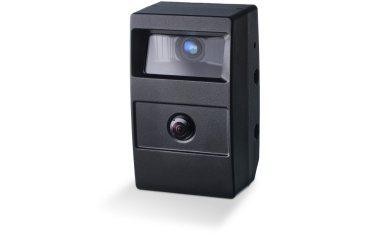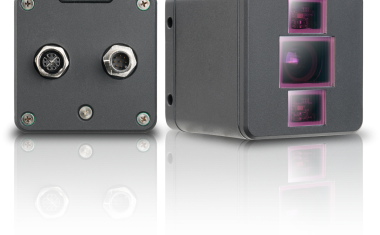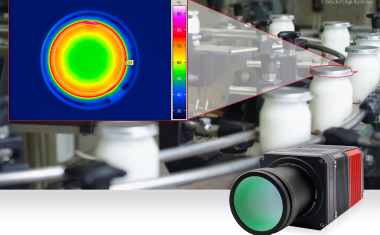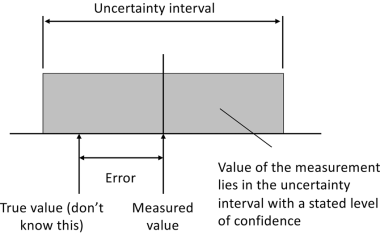Machine Vision: Market Development in Germany
The following article is taken from a contribution to the VISION Specialist Press Conference 2005, held on 6 July at the Fraunhofer IPA, Stuttgart. It provides an overview of the development of machine vision in Germany. The facts are based on the results of the current VDMA Machine Vision market survey, in which the feedback from 40 companies was evaluated. These companies form, as our experience shows, a representative cross-section of the industry. Therefore, this article will deal with the development of the industry turnover, the structure of machine vision companies: employees and turnover, shares of turnover by type of business and by type of machine vision components, customer industries, applications, the German machine vision industry and its international success and, last but not least, the VISION 2005.
The Development of the Industry Turnover
For years now, the growth rates of the machine vision industry in Germany have made it the undisputed leader in automation technology. Even in an economically disappointing period, the industry has always posted double-figure growth rates in recent years. Thus, our expectations for 2004 were not only confirmed, but significantly exceeded: The machine vision industry grew not by 10 % – as forecast –, but by 14 %. Various large projects and extremely good exports are the reasons for this positive development. The industry's turnover thus increased to 950 million Euro in Germany in 2004. Machine vision is still the key to productivity, innovation, quality and cost-effectiveness, and therefore to increased competitiveness. For that reason, our industry looks to the future with confidence, and expects a further increase this year of 7%, breaking through the magical “1 billion limit”.
The Structure of Machine Vision Companies: Employees
It is well known that our industry is characterised by small companies, tiny companies, and some larger, medium-sized companies. The statistical average was 48 employees in 2004. So the German companies are larger than the European average (35 employees). Overall, we note a clear trend to increasing company size, which can be attributed on the one hand to the dynamic growth in the industry in general, and on the other hand to company takeovers and mergers. A still relatively small number of companies also has employees abroad. The high growth in exports indicates that this share will rise in the coming years. As a high-tech and innovative industry, the german machine vision companies employ a large proportion of university graduates. We assume that the proportion of engineers employed is approaching the 50% mark.
The Structure of Machine Vision Companies: Turnover
Here, the picture is changing in contrast to previous years. Whereas in 2003 about 30 % of the companies were in the category of 1 million turnover or below, in 2004 only approximately 20 % belonged to this category. Almost threequarters of the total turnover in 2004 were achieved by only 20 % of the companies.
Shares of Turnover by Type of Business
Today as previously, the strength of the german machine vision industry is the creation of customer- and user-specific solutions. Our analysis shows that on average 55 % of the turnover was achieved by manufacturers of application- specific systems (systems for special applications in one industrial sector). The share of manufacturers of configurable system solutions (for use in various industries) is just under 11 %. Component manufacturers have a share of 28 % in Germany. Less than 6% of the evaluated turnover was achieved by distributors.
Shares of Turnover for Machine Vision Components
The share for cameras is 63 %. In Europe, the share is similar, at 65 %. Illumination, at 7 %, is also almost the same as in Europe (8 %). In contrast, optical components are well represented in Germany with 12 %, against 7% in Europe. The development with frame grabbers is particularly interesting, which in 2004 had a share of 14 % of the total component business in Germany. However, the share of frame grabbers in machine vision turnover has continually shrunk in recent years: from 7.6% (2002) to 5.8% (2003) and finally 4% last year. This reflects the trend toward digital cameras, which can be used without frame grabbers directly on the system (e.g. via FireWire, USB, etc.).
Customer Industries
With regard to industrial applications, the automotive industry (including suppliers), with a share of 18 %, is clearly in front - followed by rubber and plastics, electrics and electronics, and glass, all of which have shares between 10 and 11%. The non-industrial applications have altogether increased to a share of 30 %. In the last evaluation for 2003, it was still 24%. Further functions included transport, microscopy, postal sorting and document processing. In addition, security monitoring systems are increasingly equipped with machine vision systems. Overall, we expect a further growth in non-industrial applications.
Applications
With regard to the applications, almost half of the turnover is generated by the inspection of components. The inspection of continuous materials counts for another 10 %. Metrological applications (2D and 3D) together make up to 16 % of turnover. Other important applications are robot vision and identification.
The German Machine Vision Industry: Internationally Successful
The german machine vision industry enjoys success around the world. Last year, our industry was again able to significantly increase the share of exports in the total turnover: from 38 % (2003) to 44 % in 2004. The share of exports to North America rose from 10 % (2003) to 12 % (2004). The share of exports to Asia increased last year to approximately 14 % (2003: 10 %). The share of exports to European countries remained constant at roughly 18 %.
VISION 2005
VDMA Machine Vision, which has conceptual and technical responsibility for the trade fair VISION, again expects an impressive demonstration of machine vision technology from 8–10 November 2005 in Stuttgart. German, European and international exhibitors will be concentrated here to present components and solutions for all machine vision tasks. The VDMA will also be present, and, in conjunction with the trade fair, will be organising the Industrial Vision Days series of presentations – a framework programme providing the specialist visitor with a wide spectrum of topics relating to machine vision technologies and applications.
Dipl-Ing. Christian Demant Director of NeuroCheck GmbH Remseck, Germany Director of Industrial Vision Systems Ltd, Wantage, UK Member of the Board of the Machine Vision Group within VDMA (German Engineering Federation), Frankfurt/Main, Germany
Contact: Patrick Schwarzkopf Tel.: +49-(0)69-6603 1466 patrick.schwarzkopf@vdma.org www.vdma.org www.vdma.com/visionfinder











